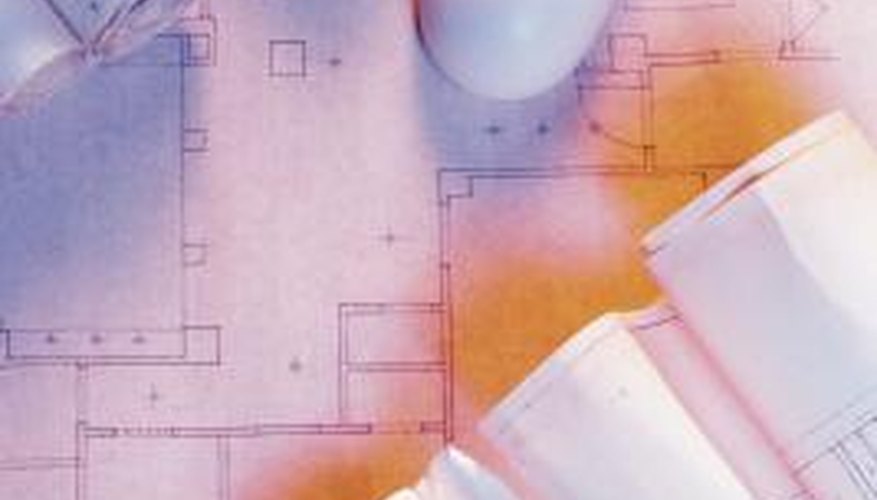Looking at a floor plan for the first time can be like encountering the alphabet of a foreign language. While some aspects of the building are recognisable, others are completely incomprehensible, depicted as arcane architectural symbols that have no meaning for the uninitiated. Fortunately, most such symbols are quickly learnt and easily recognised afterward, allowing you to read any floor plan you encounter in the future.
Window and Door Symbols
The symbols for windows and doors in floor plans are most often simply an overhead view of the item in question, usually in an open position. Doors often have an arc drawn between the open edge and the latch, showing how it would close. Bifold or folding doors are depicted as a broken zigzag across the opening. Windows are separated from the wall by transverse lines and may be thinner than the wall or made up of multiple lines, depending on the window type.
- The symbols for windows and doors in floor plans are most often simply an overhead view of the item in question, usually in an open position.
Electrical Symbols
The conventional depictions of electrical fixtures bear no resemblance to the actual item and are purely symbolic. A small circle bisected by two parallel lines is a wall outlet, while a circle superimposed over an X is a ceiling light and a T hanging from a circle is a thermostat. Floor outlets are shown as a dot inside a circle, with telephone outlets as a dot in a triangle and television outlets as a line cutting through a triangle. The letter S is a switch, unless it is inside a square, in which case it represents a smoke detector.
- The conventional depictions of electrical fixtures bear no resemblance to the actual item and are purely symbolic.
- A small circle bisected by two parallel lines is a wall outlet, while a circle superimposed over an X is a ceiling light and a T hanging from a circle is a thermostat.
Plumbing Symbols
The architectural symbols for plumbing and the related appliances tend to be easier for the untrained eye to interpret. A pipe is shown as a line, with a letter intersecting it to show the contents. G means gas, CW and HW are cold and hot water, S leads to the sewer and D is a drain. Hot and cold water can also be shown as irregularly-dashed lines. Toilets and tubs are easily recognised, looking just like the real thing from a bird's-eye view. Water heaters are generally shown as large circles while showers are an even larger square with an X across the middle, showing the incline of the floor toward the drain.
- The architectural symbols for plumbing and the related appliances tend to be easier for the untrained eye to interpret.
- Water heaters are generally shown as large circles while showers are an even larger square with an X across the middle, showing the incline of the floor toward the drain.
Informational Symbols
Most floor plans include extra symbols that stand not for physical components but rather various pieces of information. A number riding a line with arrows at both ends displays the dimensions of a particular section of wall; an arrow, a circle and the letter N in combination show the direction of north. The scale of the plan may be given in a key made up of alternating black and white rectangles, with length markings at each intersection. Large plans that span several pages are divided by means of circles with a horizontal line and two numbers within them: the top number is that of the missing section and the bottom is the name of the drawing on which it appears.
- Most floor plans include extra symbols that stand not for physical components but rather various pieces of information.
- Large plans that span several pages are divided by means of circles with a horizontal line and two numbers within them: the top number is that of the missing section and the bottom is the name of the drawing on which it appears.
